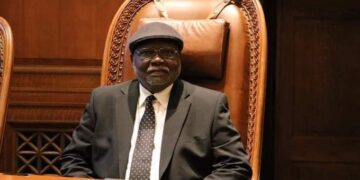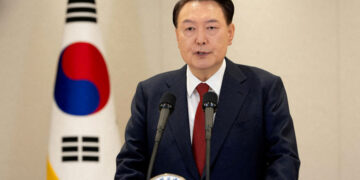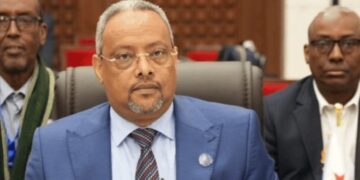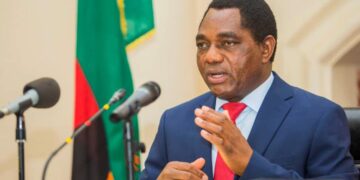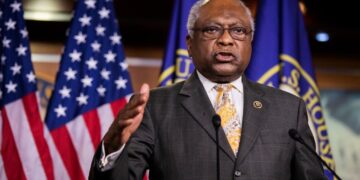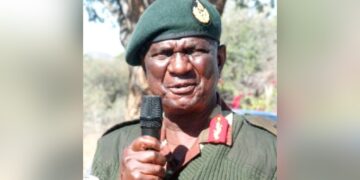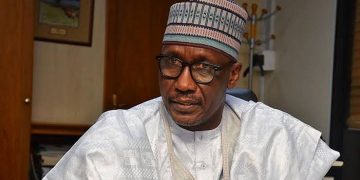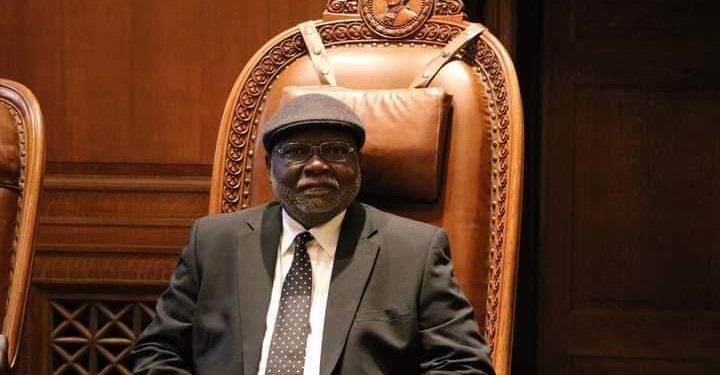By Enyichukwu Enemanna
It is no more news that the country now has a newly minted Chief Justice of Nigeria (CJN) in the person of Justice Olukayode Ariwoola, who was on Monday appointed into the number one judiciary office by President Muhammadu Buhari on acting capacity.
His appointment came after the abrupt resignation of the substantive CJN, Justice Tanko Muhammad who cited health conditions as reason for dropping the top job after about 18 months in office.
Save for his resignation, Justice Muhammad was to retire by December 2023, when he would clocked the mandatory retirement age of 70.
As customs demand, the most senior Justice of the Supreme Court, in this case Justice Ariwoola was sworn in hours after Mr. Muhammad’s exit by President Buhari at a brief ceremony which took place at Council Chambers, State House Abuja.
The new CJN is expected to remain as the acting CJN pending when the process of his appointment in substantive capacity will be concluded. This among other things includes his nomination by the President, screening for possible confirmation by the Senate.
Justice Ariwoola’s appointment has however spurred reactions in the country’s media space following the discrepancies in his age and the actual year he was enrolled in school.
While his official record as contained in Supreme Court website indicates that he was born on August 22, 1954 and enrolled in school in 1959, his Wikipedia page shows that his year of birth is 1958 and he commenced his academic pursuit just a year later. This has raised lots of eyebrow.
The new Chief Justice, a Muslim from Iseyin in Oyo State, is the seventh person from the southern part of the country to hold the office since Independence, while the nine others were from northern Nigeria.
With virtually about two years and two months to clock 70 years going by information contained in his curriculum vitae, it therefore means if eventually confirmed as substantive CJN, Justice Ariwoola will serve two years before bowing out of the bench. He is expected to mark his 68th birthday on August 22, after which he will be left with 24 months to the mandatory retirement age of 70.
Education
Justice Ariwoola’s curriculum vitae indicates that he started his primary education at Local Authority Demonstration School, Oluwole in Iseyin Oyo State in 1959 and graduated in the year 1966.
He attended Muslim Modern School in the same town from 1967 to 1969 and then proceeded to Ansar-Ud-Deen High School Saki, Oyo State, in 1970. He completed his High School at the Ansar-Ud-Deen High School, Saki, in 1974.
He was admitted into the University of Ife (now Obafemi Awolowo University, Ile Ife) to study Law in 1977.
He graduated from the university with a Bachelor’s degree in Law (LLB) in 1980.
He was called to the Nigerian bar and got enrolled as a solicitor and advocate of the Nigerian Supreme Court in July 1981.
Before his training as a lawyer, Mr Ariwoola taught at Ansar-ud Deen Society Primary School, Atori, Iseyin in 1974.
After he qualified as a lawyer and was practising in private law firms, Mr Ariwoola took up a part-time teaching job at Civil Service Training School (now Simeon Adebo) Secretariat, Ibadan, Oyo State, in 1988.
He also did part-time teaching at Extra Moral (Advance Level) Studies, Faculty of Education, University of Ibadan, between 1984 and 1988.
He similarly did part-time teaching at the Post Graduate Diploma in Public Administration, The Polytechnic Ibadan, between 1989 and 1992.
In his 40 years of legal career, he spent 30 years on the bench while ten went to the bar. He served as a state counsel during his national youth service at the Ondo State Ministry of Justice, Akure, between 1981 and 1982.
He later served as a legal officer at the Oyo State Ministry of Justice between 1982 and 1988.
From October 1988 and August 1988, the new chief justice worked in a private law firm, Chief Ladosu Ladipo, SAN & Co. Legal Practitioners, as counsel-in-chambers.
He later served as the principal partner of Olu Ariwoola & Co Mako Allah Chambers in Iseyin from 1989 to 1992.
Mr Ariwoola commenced his legal profession on the bench when he was appointed a judge of the Oyo State High Court in 1992.
After three years on the High Court bench, he was elevated to the Court of Appeal in 1995.
He was on the Court of Appeal bench until he was elevated to the Supreme Court in 2011. He is currently the longest-serving Justice of the Supreme Court having spent a total of 11 years on the court’s bench.
This marks the 30th year of his judicial career which started with his appointment as a High Court judge in 1992.
Major Decisions
Mr Ariwoola was part of the seven-man panel of the Supreme Court led by now-retired Justice Olabode Rhodes-Vivour, which gave judicial backing to the virtual court hearing on July 14, 2020.
He was also on the seven-justice bench led by his predecessor, Muhammad, that affirmed President Buhari’s victory in the 2019 general elections.
The panel, in its decision delivered on October 30, 2019, dismissed the suit of the then and now presidential candidate of the Peoples Democratic Party (PDP) Atiku Abubakar, challenging Mr Buhari’s victory in the February 23, 2019, presidential election.
He was also part of the Mr Muhammad-led seven-man panel that delivered the controversial majority judgement of the Supreme Court that sacked Emeka Ihedioha of the PDP as Imo State governor and replaced him with Hope Uzodinma of the All Progressives Congress (APC), in January 14, 2020.
The same panel of which Mr Ariwoola was a part, delivered the Supreme Court’s judgement on January 20, 2020, affirming the victories of Governors Abdullahi Ganduje of Kano State, and Aminu Tambuwal of Sokoto State in the 2019 governorship elections.
Among other tasks ahead of him as the Chief Justice of Nigeria, (if confirmed) he will empanel the 2023 states and federal election petition tribunals and hear the presidential election petition which outcome may likely be challenged even to the Supreme Court as has mostly been the case since the return of democracy in 1999.
The kind of head of judiciary that Ariwoola will make is left in the belly of time.
